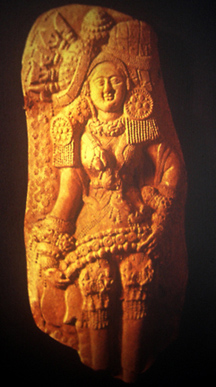The women are flanked by tigers and caprids, as well as by trees, but these are now palms rather than pipals.
The goddesses seem to reflect some influences from the west, notably in the Hathor flip and their widehipped shape with turned-out feet, which show strong similarities to Hurrian goddesses at Carchemish and Hasanlu. But they still show a distinctly Indian character, especially in the tiger and tree connection, which goes back to the Harappan period.
The stone rings are not found anywhere else. Some have a lotus formation instead of a hollow in the center.
These north Indian ringstones date from the early centuries BCE, and are found in sites like Patna, Taxila in the hill country, Rupar in the Panjaab, and the Ganga valley.
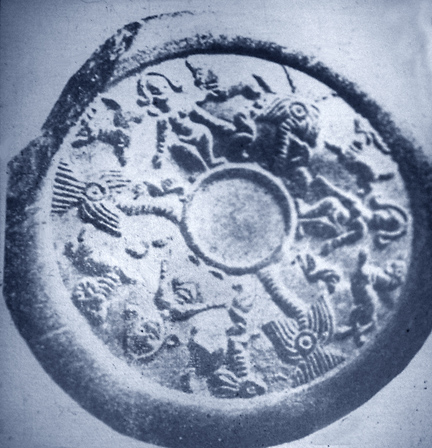 Patna
Patna
The goddesses on this ringstone from Taxila are standing between plants which may be trees but are hard to make out. They are reminiscent of the palmate designs popular in Canaanite, Israelite, and Syrian art. These are a major theme in the Nimrud ivories and on the Halaf stelas of the late Hurrian era, several centuries before the ringstones.
The women's feet are elongated to connect with the plants, a relation which is emphasized in the next image.
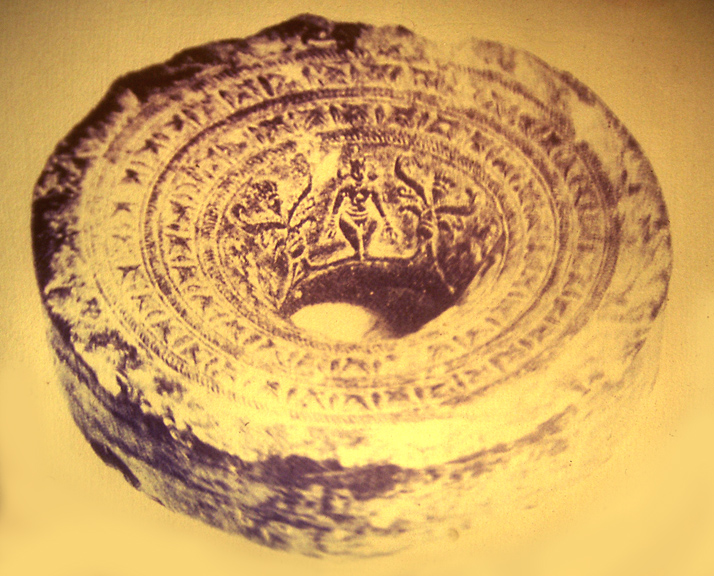
This detail from another stone ring with a serial goddess shows her standing between / in a tree (or so it appears) grasping branches in each hand. She stands on a lotus and wears bangles. She may have wings (again characteristic of a popular Hurrian goddess) or possibly a butterfly headdress. Her vulva and hips are highlighted by a band of dots. Such markings of a numinous field around the vulva are found incised or painting on many female figurines from the neolithic period, and recur later (recall the "hairy triangle" thread of last year.)
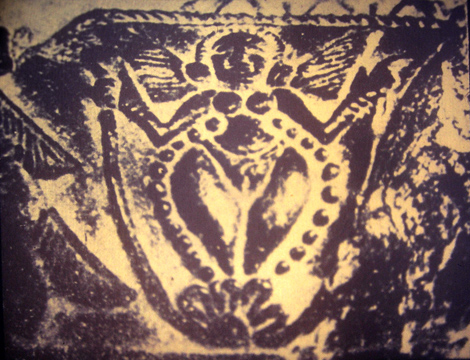 Patna
Patna But check this out: a Syrian plaque from the Middle Bronze Age (as usual the dating leaves something to be desired). I'm guessing she is somewhat later than the Indus seal images of the goddess in the tree, but the dating needs to be clarified. This one's in the Ashmolean collection.
On a different note, this Tamil figure, (provenance again unspecified, dated circa 100 BCE) wears a headdress similar to the Harappan "fan" style, and quite distinct from the polos headress of far western Asia.
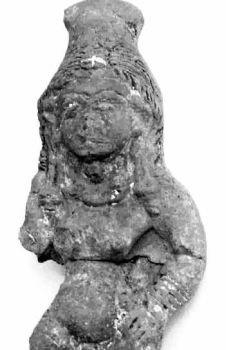
A whole array of north Indian sculptures from the early centuries BCE show women wearing piles of fabric draped over the head, which is also seen at Mohenjo Daro 2000 years earlier. It could be argued that the two are unrelated, but what other archaeological examples of voluminous piled headdresses of this type exist outside of ancient India? It seems reasonable to consider a connection.
